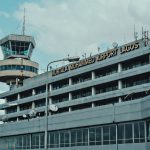
The U.S. House of Representatives is set to invite Steve Dickson, the administrator of transportation agency, the Federal Aviation Administration (FAA) to testify before it in a hearing on new C-Band 5G deployment and its impact on aviation safety.
Sources told Reuters that the House Transportation and Infrastructure Committee will hear from FAA Administrator Steve Dickson together with aviation and wireless industry officials. The industry officials include the head of Airlines for America, a trade group representing passenger and cargo airlines, and Aerospace Industries Association, an umbrella body for airplane manufacturers.
Peter DeFazio, The Chairman House Committee on Transportation and Infrastructure in a statement to Reuters said:
“I hope Administrator Dickson and all of our witnesses come prepared for a robust discussion about how the goal of a successful 5G deployment can co-exist with the safety of our skies”.
Two major telecom operators, AT&T and Verizon Communications had on January 18 agreed to delay the switching on of new telecoms towers close to key airports even after turning on the new 5G C-Band service.
The FAA has raised the alarm how the 5G technology would cause interference as Radio altimeters are deployed to give data on height above ground for bad-weather landings.
Notable U.S. passenger and cargo carriers had last week warned of a possible “catastrophic” aviation crisis, while warning that 5G deployment near some airports “the vast majority of the traveling and shipping public will essentially be grounded” without delay.
The agency though fell short of commenting on Dickson’s planned testimony on Tuesday but announced that it issued approvals for more altimeters to allow 90 percent of the commercial aviation fleet in the country carry out low-visibility landings at airports where 5G wireless is deployed.
The total approved altimeters got to 20 after the FAA approved seven additional altimeters.
Sources further told Reuters that Verizon on its own has agreed not to turn on about 500 towers near airports or less than 10 percent of the planned deployment pending when the carriers and the agency solve the impasse.
But while that is on hold, the issue is disrupting some landings in poor weather in smaller airports, an occurrence common among regional jets. There appears to be valid concerns on what would happen when the wireless carriers turn on those towers near airports.
“We are now seeing the operational impacts to airline travel,” DeFazio said. “All interested parties must come together to address these impacts and implement long-term solutions that will increase safety and reduce disruptions for affected airports.”
Boeing 717, 737, 747, 757, 767, 777, 787 MD-10/-11; Airbus A300, A310, A319, A220, A320, A321, A330, A340, A350, A380; Embraer 120, 170, and 190 regional jets; All CL-600/CRJ regional jets; DHC-8 and ATR turboprops are the current Airplane models with cleared altimeters.
Discover more from TechBooky
Subscribe to get the latest posts sent to your email.















